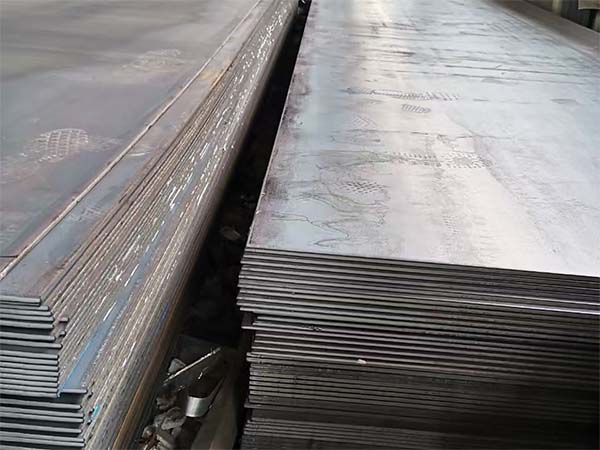Both
A36 steel (ASTM A36/SA36)and
SS400 steel (JIS G3101 SS400) are two of the most commonly used carbon structural steels globally. They are very similar in strength, processing properties, and applications, and are therefore often considered equivalent steels used in construction, machinery manufacturing, and steel structure engineering.
Although the two steels have similar properties, there are still some differences in their standard systems, chemical compositions, and low-temperature performance. This article will systematically compare the two and explain their substitution principles and optional alternative materials.

1. Differences in chemical composition
|
Element
|
A36 (ASTM)
|
SS400 (JIS)
|
|
C
|
≤ 0.25%(≤20mm)
|
≤ 0.23%
|
|
Mn
|
0.80–1.20%
|
≤ 1.60%
|
|
Si
|
≤ 0.40%
|
≤ 0.30%
|
|
P
|
≤ 0.04%
|
≤ 0.050%
|
|
S
|
≤ 0.05%
|
≤ 0.050%
|
The main differences between the two are: SS400 has a more lenient upper limit on manganese content, which is beneficial for improving strength. A36 has specific requirements on silicon content, which is more conducive to improving toughness and deoxidation effect. Both have low carbon content and good weldability. Overall, the chemical composition is not significantly different, and both belong to low-carbon, easy-to-weld structural steels.
2. Differences in mechanical properties
|
Performance
|
A36
|
SS400
|
|
Yield strength
|
≥ 250 MPa
|
≥ 245 MPa
|
|
Tensile strength
|
400–550 MPa
|
400–510 MPa
|
|
Elongation rate
|
≥ 20%
|
≥ 23%
|
Key points of analysis:
A36 has a slightly higher upper limit of tensile strength, making it suitable for applications with stricter strength requirements.
SS400 has a slightly higher elongation, better plasticity, and is easier to process.
Both have almost the same yield strength, making their engineering applicability very similar.
The yield strength of both decreases with increasing thickness, which is within the standard allowable range.
3. Applicable scenarios
A36: Commonly used in international engineering fields, including building structures, bridges, ships, oil platforms, and mechanical components.
SS400: Primarily used in Japanese and Asian markets, including building structures, bridges, shipbuilding, and vehicle manufacturing.
Both have essentially the same applications, but A36 is more prevalent in international engineering.
Can the SS400 completely replace the A36?
Strictly speaking, the performance of SS400 and A36 is very close, and they can be substituted for each other in most common application scenarios. However, the "complete substitution" still depends on the usage environment and project requirements.
Alternative situations:
General structural components (section steel, steel plate, steel pipe).
Building frames, bridge beams and slabs, mechanical components.
For ordinary engineering projects, when the buyer has no special standard requirements.
A situation where they are not completely equivalent
Different standard certifications: If the contract or design documents explicitly require ASTM A36, the ASTM standard must be implemented and SS400 cannot be directly used as a substitute.
Low-temperature performance: A36 shows more stability in some low-temperature impact requirements, while SS400 may not perform as well as A36 in extremely low-temperature environments.
What other standard steels can be used to replace A36 steel?
Chinese Standard (GB/T700)
Q235B: Its performance is closest to that of the A36 and is often directly used as a substitute for the A36.
Q235C/Q235D: Better low-temperature impact performance (C/D grade is suitable for use under low-temperature conditions).
Q275: Its strength is slightly higher than that of Q235 and it can replace A36 in scenarios with higher load-bearing capacity.
European Standard (EN 10025)
S235JR: Equivalent to Q235B/A36, commonly used in the European market.
S235J0 / S235J2: Superior in impact toughness and low-temperature performance.
Precautions when choosing an alternative
Mechanical properties: A yield strength of ≥ 235-250 MPa can meet the application requirements of most A36.
Weldability: Try to choose low-carbon equivalent materials to avoid welding cracks
Read more : What is the meaning of A36 plates or ASTM A36 steel plate thickness
